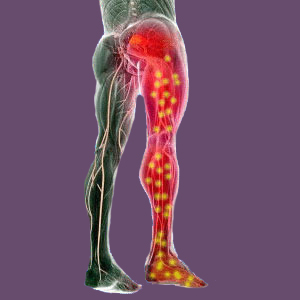
Piriformis pins and needles may occur in various parts of the lower body anatomy and can become a chronic concern for patients. Worse still, tingling is often one of the initial symptoms of piriformis syndrome, often escalating quickly to include pain, numbness, weakness and even functional deficits in the legs and feet.
A feeling of pins and needles is certainly not the worst expression of piriformis syndrome, but it should be taken seriously. These tingling sensations may indicate circulatory or neurological problems that may become significant health issues. All recurring pins and needles conditions should be evaluated by a neurologist for best therapeutic outcomes.
This dialog examines how pins and needles sensations may be related to the piriformis muscle, as well as providing alternate explanations for identical symptoms. We will also detail how pins and needles often progresses to include additional symptoms over time.
What is Piriformis Pins and Needles?
Pins and needles is a layman’s term for one of the many common symptoms of piriformis syndrome. Pins and needles is aptly named since it feels like thousands of tiny pinpricks over a given area of the body. The symptom is not actually painful, but feels as if there is no blood or nerve activity reaching the affected region. The more common diagnostic names for pins and needles include tingling or paresthesia, with the latter term being used in combination with numbness, as well.
Pins and needles often occurs from placing a limb in a position that cuts off blood flow, such as when sleeping on an arm. However, when there is no reason to suspect obvious positional causation, and symptoms exist in the hip, buttocks, legs and/or feet, the piriformis muscle might be the underlying source of recurring or chronic tingling.
Pins and Needles Origins
The piriformis muscle can spasm and clamp down on the sciatic nerve or the pudendal nerve, causing tingling sensations in the buttocks, legs and/or feet for sciatic compression and pins and needles in the groin, genitals and perineum for pudendal compression. This is a classic manifestation of piriformis syndrome, along with pain, numbness, weakness and possible functional deficits, like foot drop.
However, there are other logical explanations for tingling in the exact same regions and these explanations are actually more frequently observed than piriformis syndrome. Alternative explanations for pins and needles in the lower body include:
Ischemia is the most common source of widespread tingling, pain and other common sciatica-like symptoms. This form of ischemia is not created by deficiency of circulatory tissues, but instead more commonly sourced in the mindbody interactions.
Diabetes and obesity (which often go hand in hand together) can both cause neurological dysfunction and tingling in the lower anatomy.
Neuromuscular disease can cause a range of diverse symptoms and tingling is a typical preliminary manifestation of several of these conditions.
True lumbar spinal sciatica can certainly produce pins and needles, as well as other symptoms in identical regions to piriformis syndrome. However, symptoms of true sciatica will often be more predictable and limited in areas affected.
Cervical spinal stenosis can produce identical expressions to piriformis syndrome, but typically with a diversity of other symptoms, as well, often affecting the upper body and internal bodily systems and not simply the legs and feet.
Localized nerve dysfunction or injury may produce tingling in a specific innervation pattern in one leg or foot.
Piriformis Pins and Needles Statistical Progression
When tingling is the only symptom of piriformis syndrome, the odds are that the condition will soon escalate to include pain, numbness and weakness in the legs and feet if the sciatic nerve is affected. If the pudendal nerve is affected, symptoms might escalate to include pain and burning in the perineum, genitals and groin, as well as incontinence and/or sexual dysfunction.
Tingling may be a transient consequence of piriformis injury and may also follow pain as injury is rehabilitated or healed. If this represents your situation, be sure to keep your care provider up-to-date on the progression of the condition for best results of treatment.
Piriformis Pain > Piriformis Symptoms > Piriformis Pins and Needles





